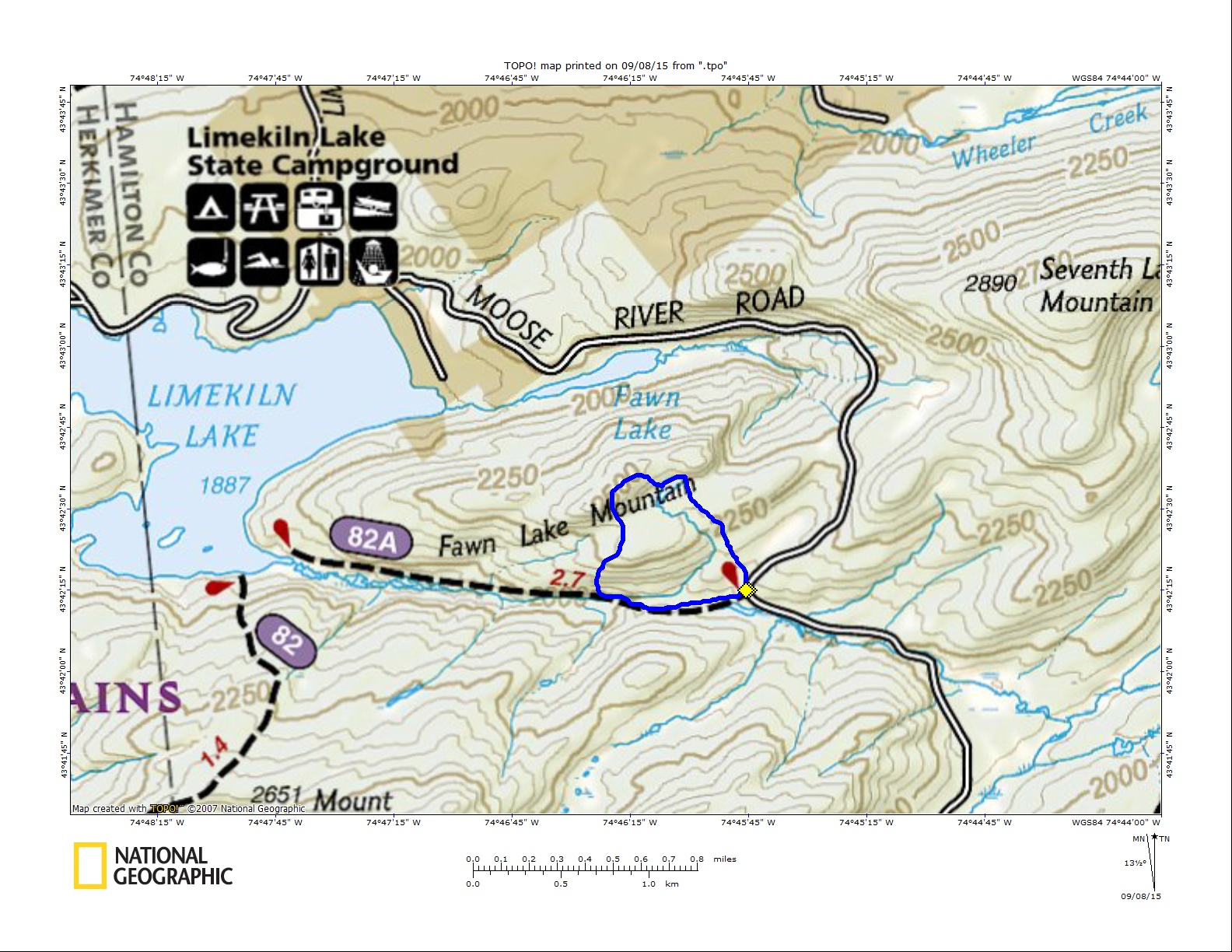As you can imagine, four days in the Moose River Plains is only enough time to merely scratch the surface of the possible exploring that can be had there. But on this day I only had a brief amount of time to take in what I could, and I had one particular standalone peak in mind. What I knew for sure is that I wanted to get out and play in the wilderness, so I settled on Fawn Lake Mountain.
Moose RIver Road
Early one morning I crawled into my car for an 8:00 am meet time in Inlet with a new hiking companion Cordell. This would prove to be his first ever bushwhack, thankfully I didn't choose a much more difficult transition from trail hiking. This day would only be about a 3-mile loop, giving Cordell a taste of trailless travel without a total burnout of his new outdoor activity. Cordell followed me over to the trailhead for an obscure trail that leads to Limekiln Lake; this would be our start point for the morning bustle. I typically will use a trail when I can, in the least to access the base of the mountain and gain as much elevation as I can before I step off between the contours. This trail wouldn't get us much elevation but it was perfect to get us over a stream that could have the potential to be a crossing nightmare.
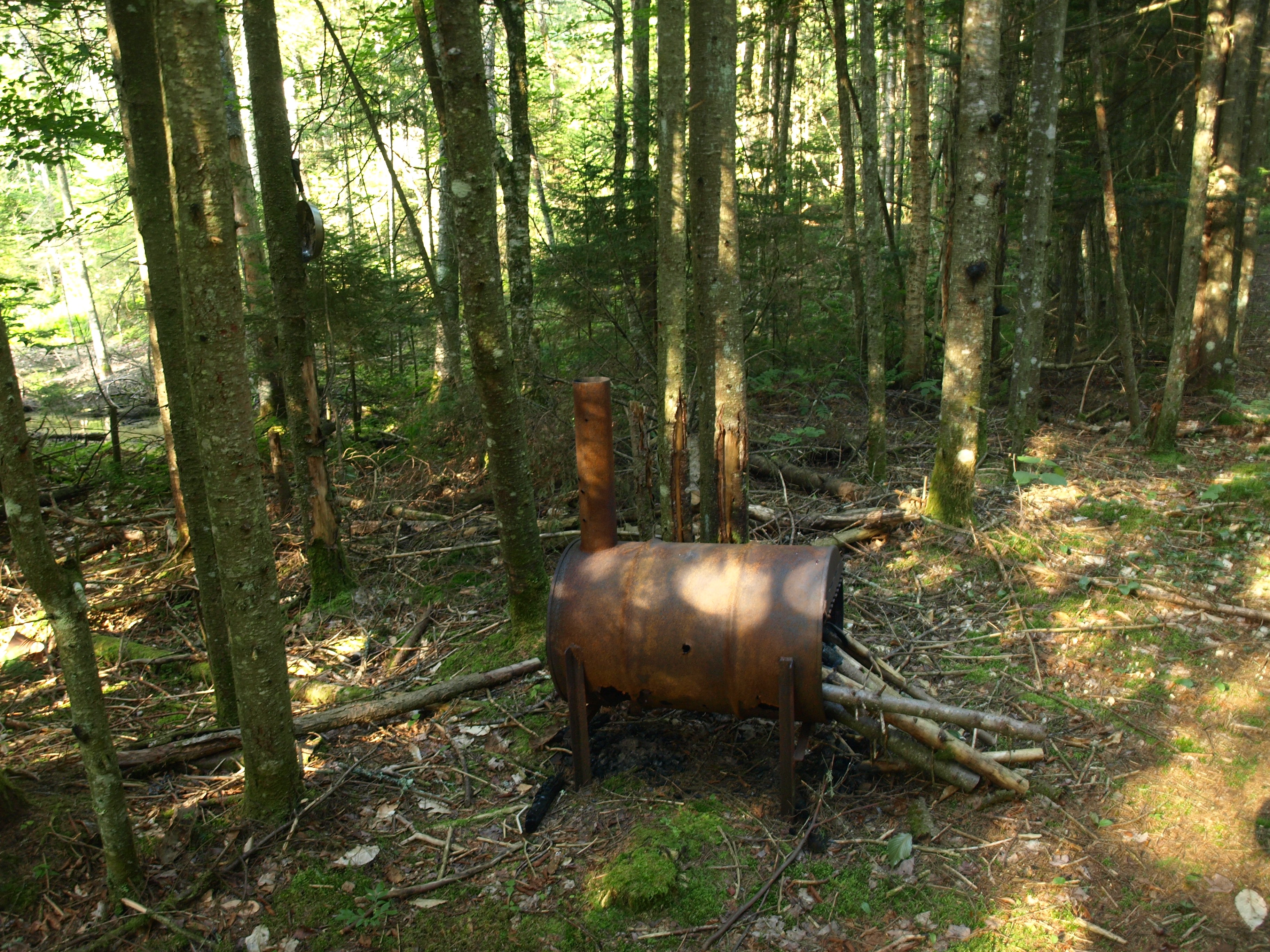
The Limekiln Lake Trail
This flow into Limekiln Lake had the chance of being a beaver swamp mess in many of the low lying areas, I wanted to avoid that if I could, Cordell did not oppose. The trail was fairly easy to find, but there was not a trail sign along the road. I located it by using my GPS and a keen eye that saw a trail disk at the start. I still give thanks that I have a keen eye after bushwhacking for so many years.
The trail descended a bit and on a wide birth we hiked through a dark colored forest of evergreens. Passing through a make-shift camp that rested right on the trail we made excellent time to the inlet crossing. My hunch was right on the money about the beavers. The bog bridge that crossed the inlet also doubled as a foundation for a beaver dam. With a deeply flooded upstream and a wet mess downstream we played a sketchy game of balance on an oversized field of pick-up sticks. The old bridge poked out through the beaver twigs, but luckily it was a short traverse to the other side. Had it been spring this story might be told a bit differently.
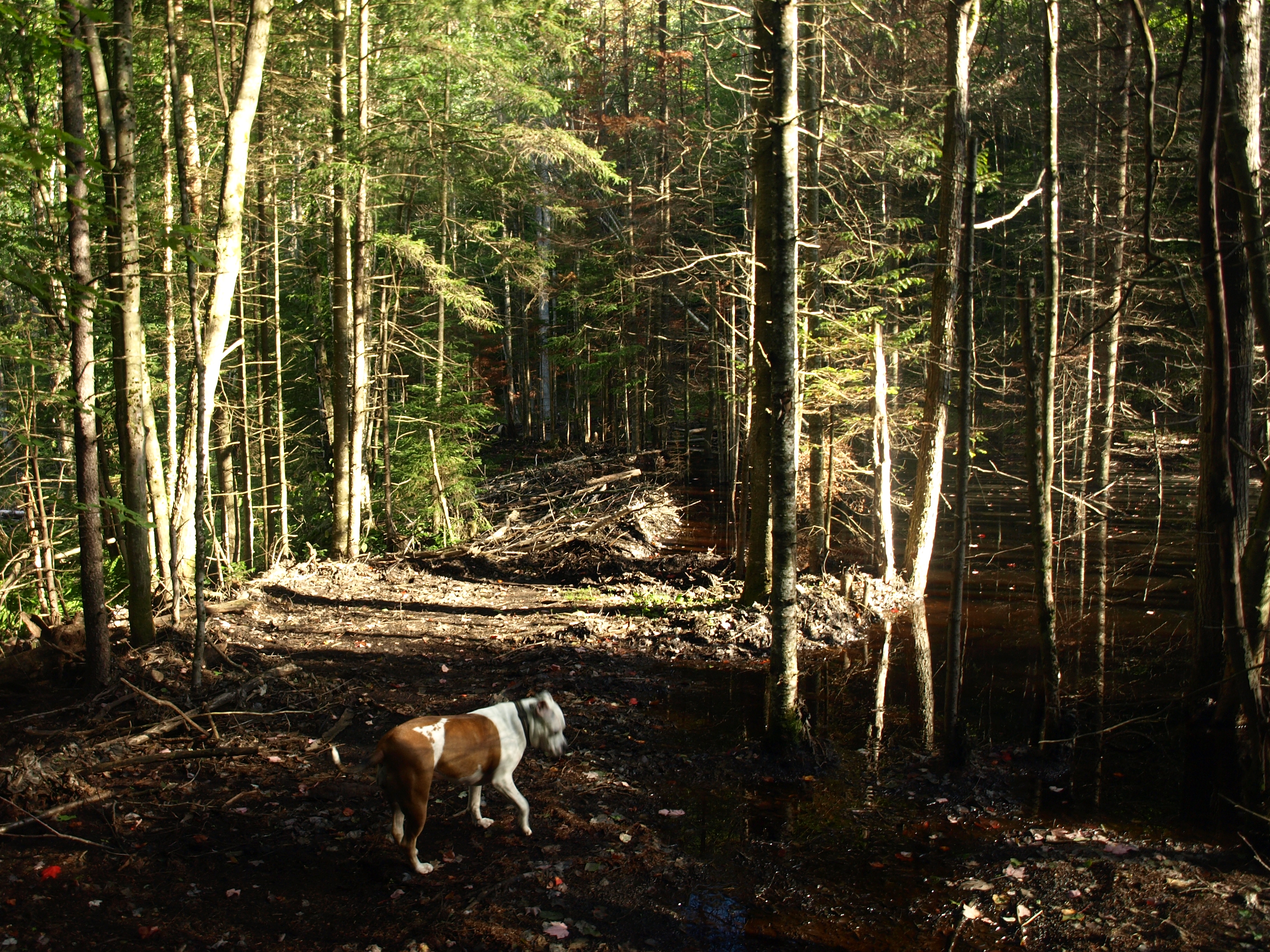
Heading up Fawn Lake Mountain
Once across the flowage, we settled right in and hit the forest. Setting our course almost directly north we began our climb through the ever so familiar beech sapling forest. The terrain was moderately steep, but Cordell soon found that a "moderate" scale on a bushwhack is much closer to that of a "difficult" scale on a trail hike, his learning experience was about to near its first chapter. After a bit of push and pull through the beech trees and occasional spruce band we crested the initial shelf and onto a flat zone for a bit.
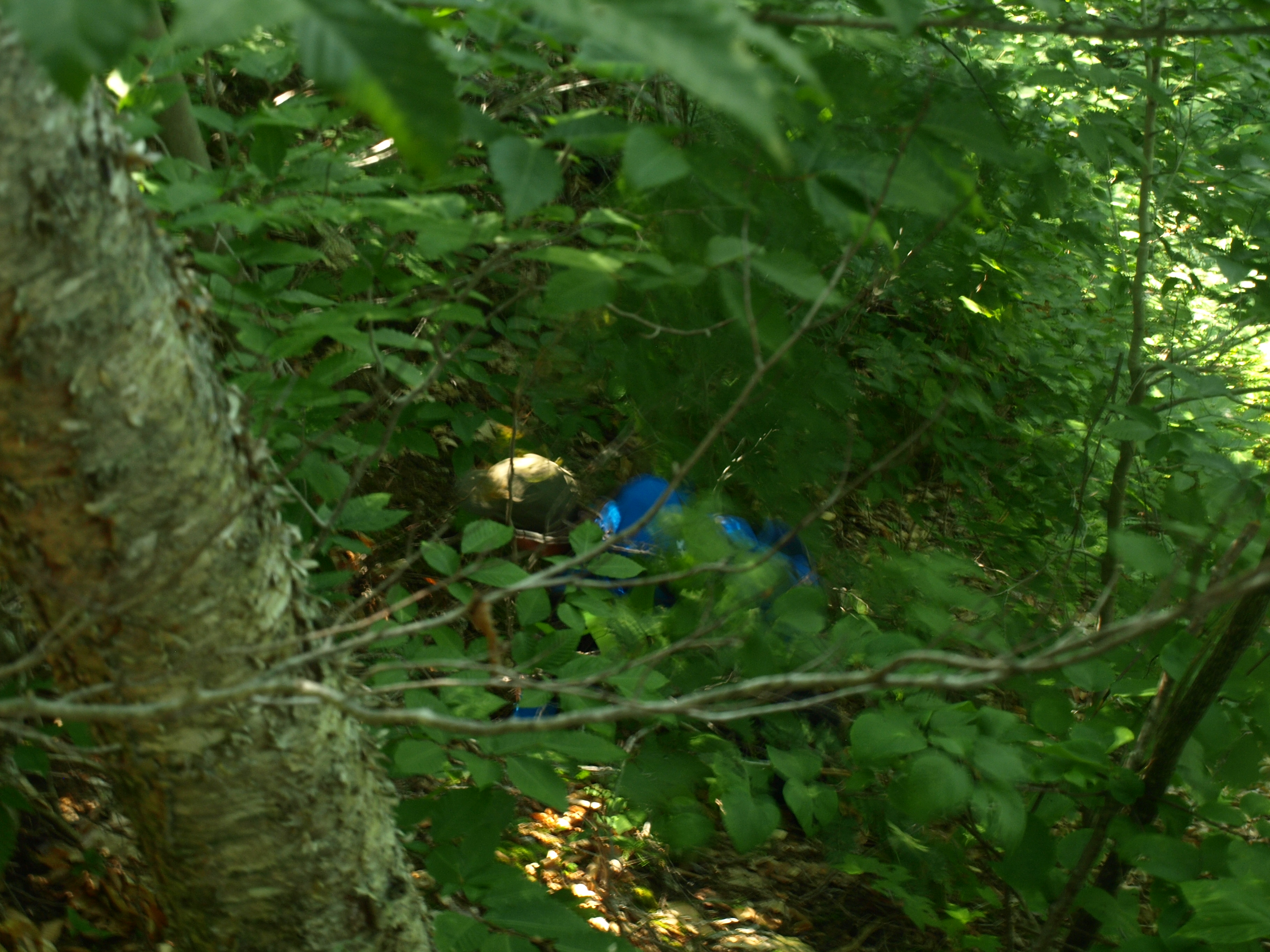
Now with a slight breather under our belt we prepped our final ascent to the summit ridge. To avoid the steep portions of the mountain we edged a bit more west in a switchback motion which proved to be a charm as we topped out along the long ridgeline. The steep slopes looked promising for views, but the trees were just a bit taller than the grade they were growing on leaving us with great views of their foliage. We popped out just below the actual summit, which was not all that different than our actual location. The dead branches of the past succession of trees were not giving us much room for relaxation; so we didn't hang around for long.
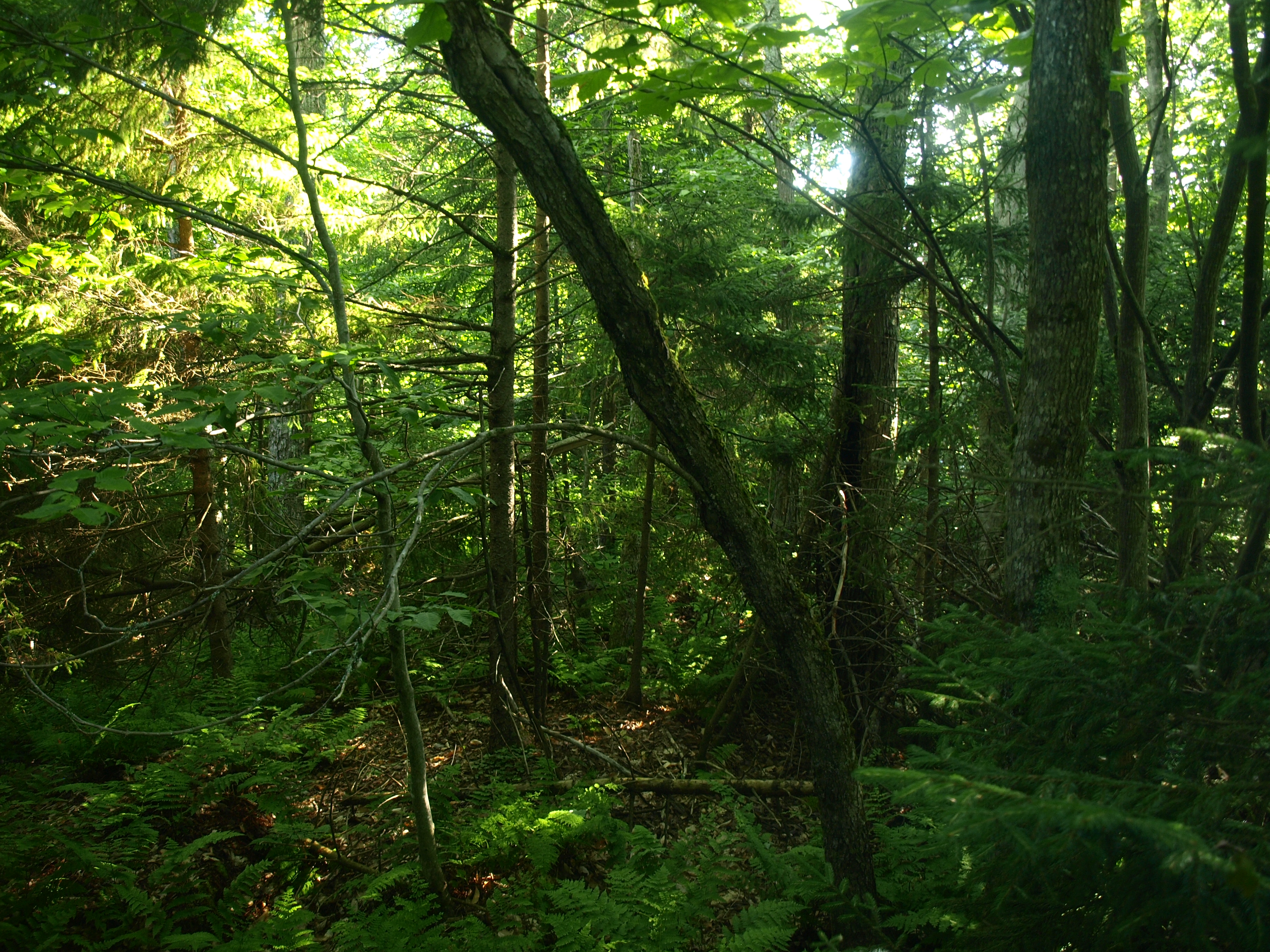
Down to a hidden pond
"How about we make this a loop and check out that hidden pond on the shoulder of the mountain?" I asked Cordell. "There's a pond, sure!" He accepted the challenge; he was a really good sport. The pond only laid about a quarter mile off the summit, but it would be a steep quarter mile. We busted through the thicker growth around the summit and pushed our way downhill and quickly we could see the glistening of the blue waters below. I was happy to see water, because as many of you may know, some of these hidden beaver ponds now resemble the rough at your local country club. Heavy drainage, a bursting of a beaver dam, a dry season, or even over the course of time and some of these backcountry ponds you see on a map become a massive field of grasses, stumps, snags, and woody shrubs.
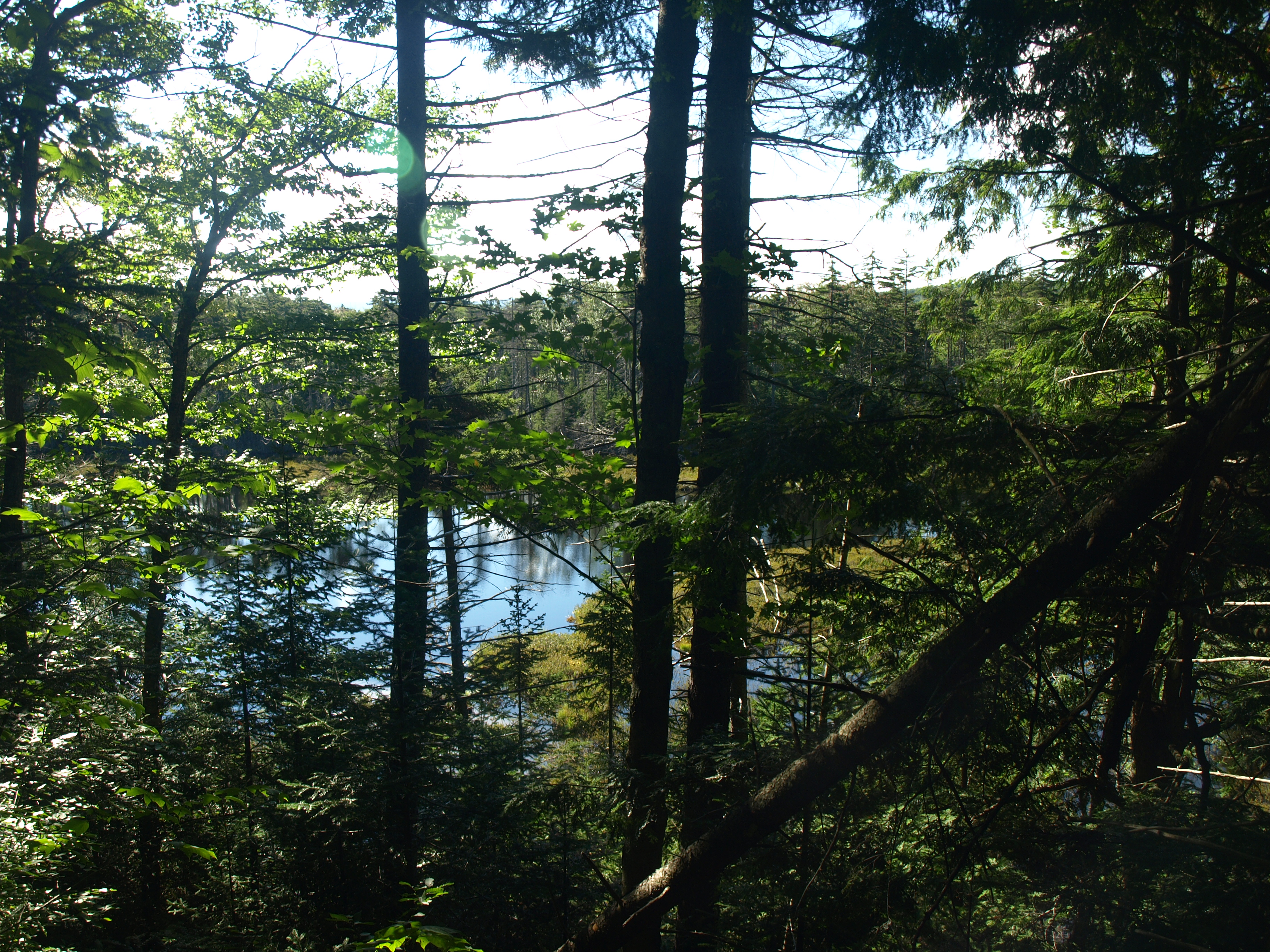
The shore of the pond was very steep with small cliffs blocked easy passage along the edge. We had to stay high, work low, and again climb back up until we cleared the shore for a final descent to the lowland. The higher reaches above the pond were very tough, very steep, and very dead; it proved to be more of a challenge than we expected, but we were elbow deep into it, so we had to manage. Actually Cordell didn't have any idea what to expect but I sold it well. The pond was actually quite gorgeous for what it was and we were both happy to be experiencing it. We hopped a small inlet and back into the hardwood forest we went.
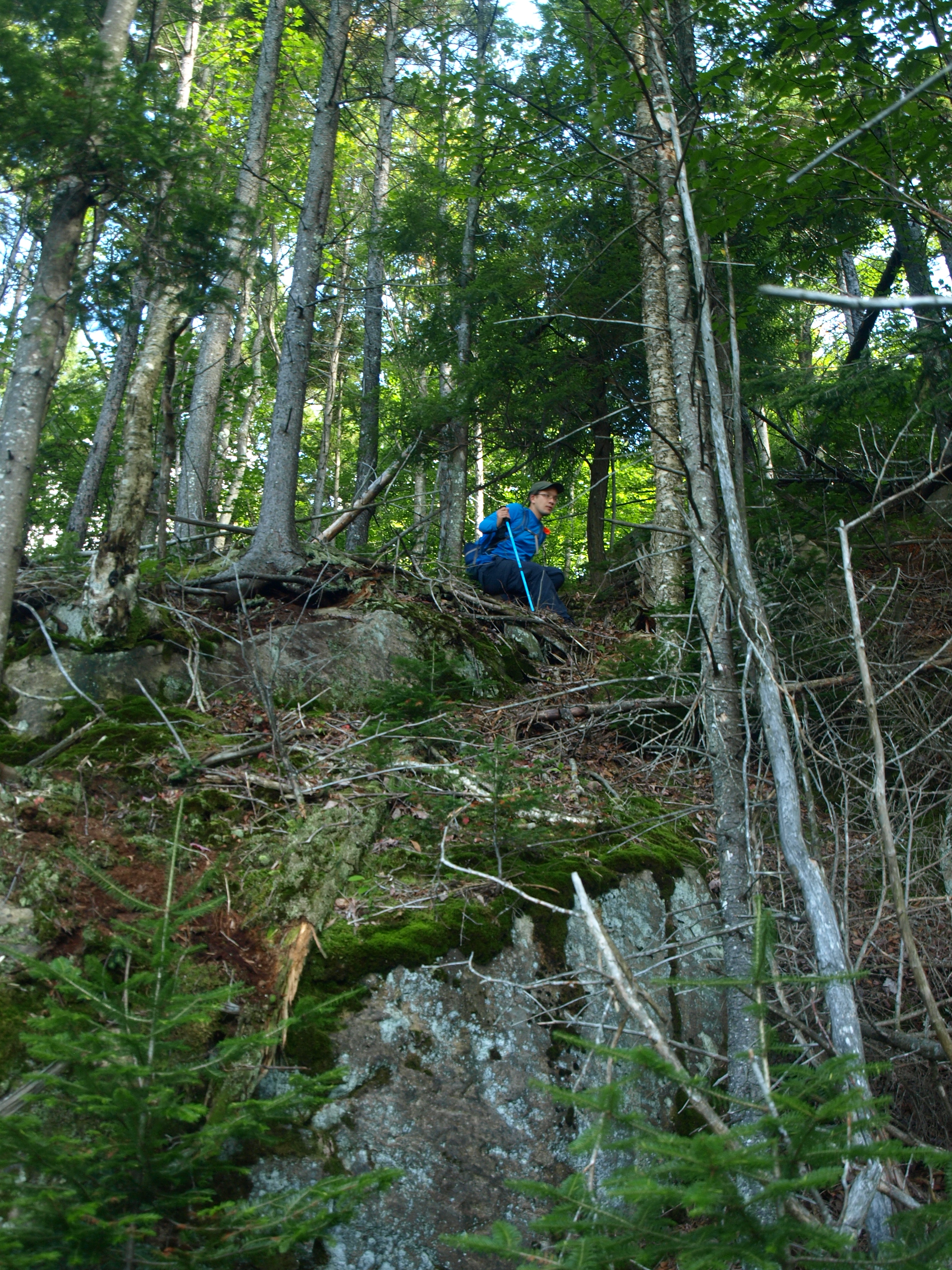
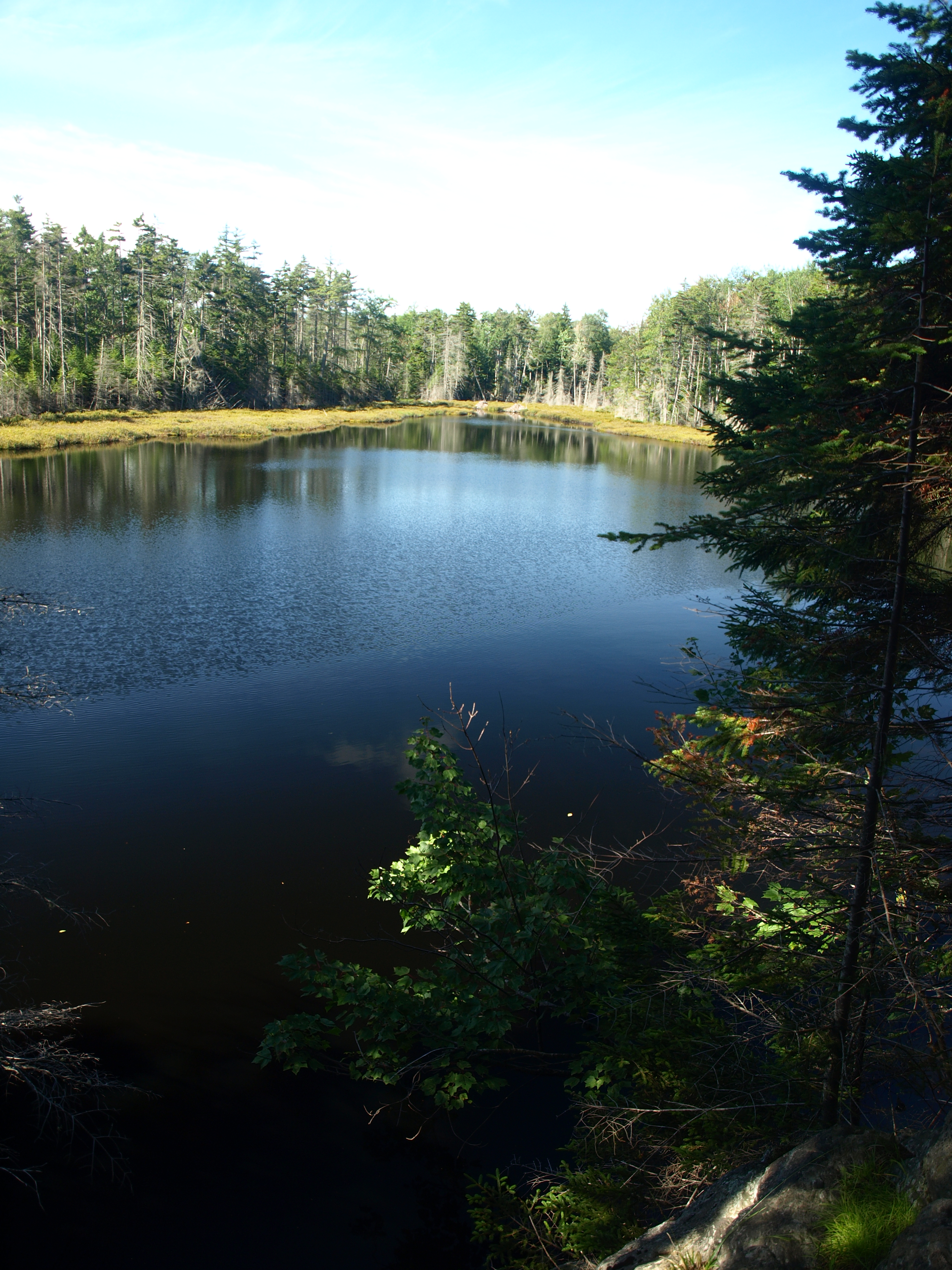
The descent now was as easy as it gets. As we made our way through we could feel the road getting closer and on occasion hear the sounds of a passing car over the wash boarded dirt road. We emerged from the forest almost as green as a spruce tree from all the needles we collected along the way, but emerged grateful to have experienced the beauty of the Moose River Plains. I will be back, and I am sure Cordell will be back too, maybe I can talk him into another bushwhack someday.
